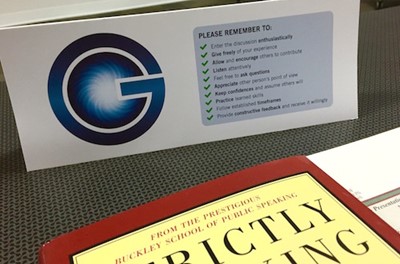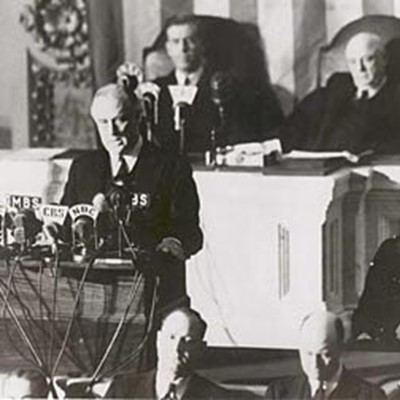
Even when speakers are diligent about preparing and rehearsing a business presentation, they often shortchange one important part—preparing for the questions and challenges they might get.
In Buckley private on-site programs, we devote training time to practicing how to better handle those questions.
“When you get a dozen or more people from the same company in the room and work your way through this exercise, it’s enlightening,” says Buckley coach Jenny Maxwell who frequently facilitates. “People are talking about the same topics. And they can speak freely, because everyone is working toward the same goal.”
 On-site Q&A sessions give company teams a chance to learn from each other and collaborate for the best answers.
On-site Q&A sessions give company teams a chance to learn from each other and collaborate for the best answers.
The structure of the exercise is simple enough: Participants brainstorm the types of questions they get when making company presentations. Then volunteers step up and attempt to answer them. After each answer, the group discusses how well the answer works with some additional feedback from Buckley coaches.
But, Jenny says, that’s the only part of it that’s simple. “When you’re an expert on a topic, giving a concise answer isn’t as easy as you might think. And companies often discover that individuals provide very different answers—and facts—when tackling the same question.”
Here are three things she’s learned from prepping teams for Q&A that might help you:
1. Work on the easy questions, not just the tough ones.
“People will often get ready for the challenges, especially if it’s a client presentation or a tough message they have to deliver,” Jenny says. “But I see people really struggle to answer easy questions, because they know so much about the answer.”
She says questions like “What does your company do?” and “Why is your product/service better?” often lead to rambling, confusing answers.
“Those really can be hard questions, because you know the topic and the answer feels so big. So it’s understandable that you might struggle to answer the easy question, but it’s not very reassuring.”
2. Practice answers on your feet.
“We go into companies that tell us they’ve already prepped answers to frequently asked questions. When people stand up to answer those FAQs in our exercises, they find it’s a lot different than memorizing talking points at their desks,” says Jenny.
She suggests practicing on your feet and getting colleagues to throw the question at you in a variety of ways, so that you get better at recognizing and categorizing questions.
“I know from my own experience that the more you stand up in front of people and practice listening and answering questions, the better you get at it."
3. Go in with a plan.
A plan, Jenny says, is more than brainstorming questions and coming up with answers. It should also include some thinking about when you want to take questions and how long you want your Q&A session to last.
“My rule is that bosses and customers get to ask questions whenever they want,” she says, “but in other situations, it helps to think about how you want to take questions. At the end of each section? At the end of your presentation?”
This, she explains, can help you in a couple of ways. You can let the audience know what your plan is before you start your presentation. You also benefit from thinking it through in advance, so that you manage your time and the situation rather than letting the people asking the questions take over.
 Jenny anticipating questions she might have before watching a documentary about Anthony Weiner. As for the answers, well....
Jenny anticipating questions she might have before watching a documentary about Anthony Weiner. As for the answers, well....






